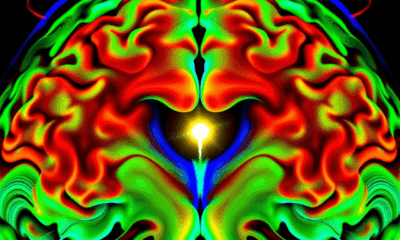While we try to keep things accurate, this content is part of an ongoing experiment and may not always be reliable.
Please double-check important details — we’re not responsible for how the information is used.
Alternative Medicine
“The Green Space Paradox: How Tree Layout Can Impact Human Health”
A long-term Switzerland-wide study has found that neighbourhoods with numerous, well-arranged trees exhibit lower mortality risks than other areas. The reasons behind this, and the factors that play a role, will require further research.

Alternative Medicine
Brewing a Breakthrough: Scientists Turn Beer Yeast into Mini Factories for Smart Drugs
A team of researchers has turned ordinary yeast into tiny, glowing drug factories, creating and testing billions of peptide-based compounds in record time. This green-tech breakthrough could fast-track safer, more precise medicines and reshape the future of pharma.
Alternative Medicine
“Misdirected Immune Response: A Common Drug Holds Promise in Stopping COVID-19 Protein-Driven Attacks on Healthy Cells”
Scientists have uncovered a stealthy tactic used by the SARS-CoV-2 virus: one of its proteins can leap from infected cells to healthy ones, effectively tricking the immune system into attacking the body’s own tissues.
Alternative Medicine
Iron Overload: The Hidden Culprit Behind Early Alzheimer’s in Down Syndrome
USC researchers have uncovered a hidden driver behind the early and severe onset of Alzheimer’s in people with Down syndrome: iron overload in the brain. Their study revealed that individuals with both conditions had twice the iron levels and far more oxidative damage than others. The culprit appears to be ferroptosis, an iron-triggered cell death mechanism, which is especially damaging in sensitive brain regions.
-

 Detectors2 months ago
Detectors2 months agoA New Horizon for Vision: How Gold Nanoparticles May Restore People’s Sight
-

 Earth & Climate4 months ago
Earth & Climate4 months agoRetiring Abroad Can Be Lonely Business
-

 Cancer3 months ago
Cancer3 months agoRevolutionizing Quantum Communication: Direct Connections Between Multiple Processors
-

 Agriculture and Food3 months ago
Agriculture and Food3 months ago“A Sustainable Solution: Researchers Create Hybrid Cheese with 25% Pea Protein”
-

 Diseases and Conditions4 months ago
Diseases and Conditions4 months agoReducing Falls Among Elderly Women with Polypharmacy through Exercise Intervention
-

 Earth & Climate3 months ago
Earth & Climate3 months agoHousehold Electricity Three Times More Expensive Than Upcoming ‘Eco-Friendly’ Aviation E-Fuels, Study Reveals
-

 Chemistry3 months ago
Chemistry3 months ago“Unveiling Hidden Patterns: A New Twist on Interference Phenomena”
-

 Albert Einstein4 months ago
Albert Einstein4 months agoHarnessing Water Waves: A Breakthrough in Controlling Floating Objects





























